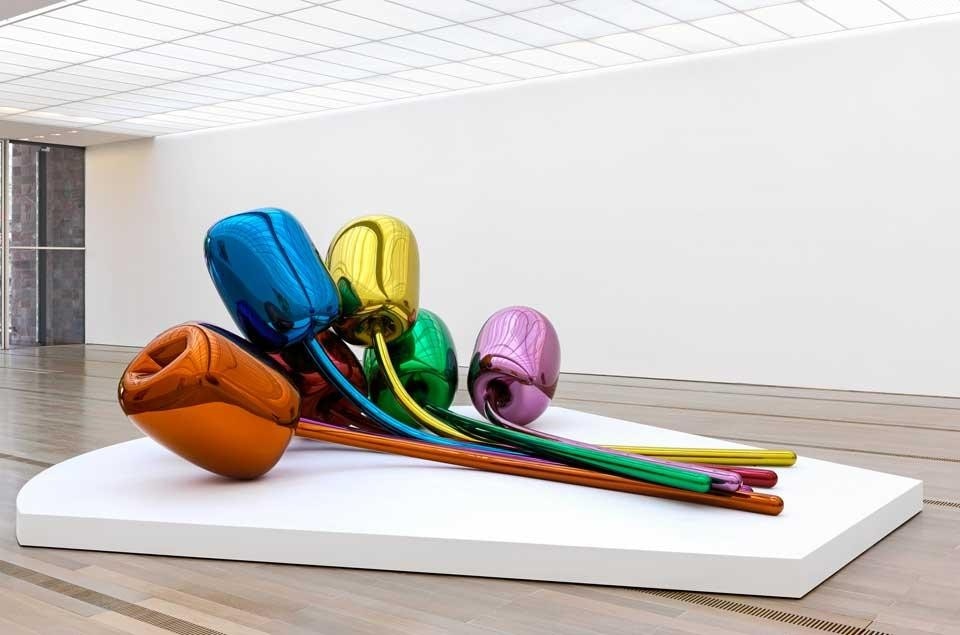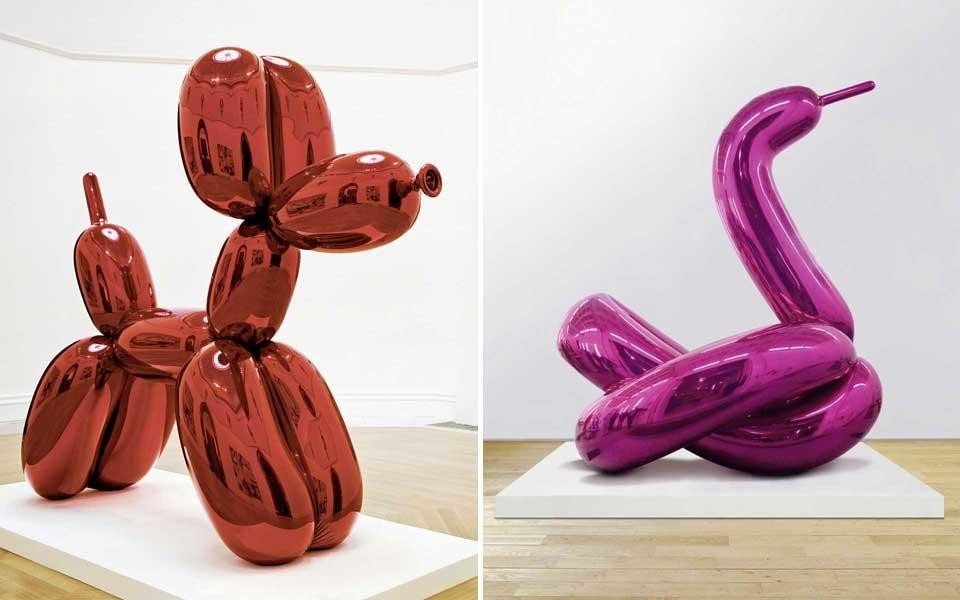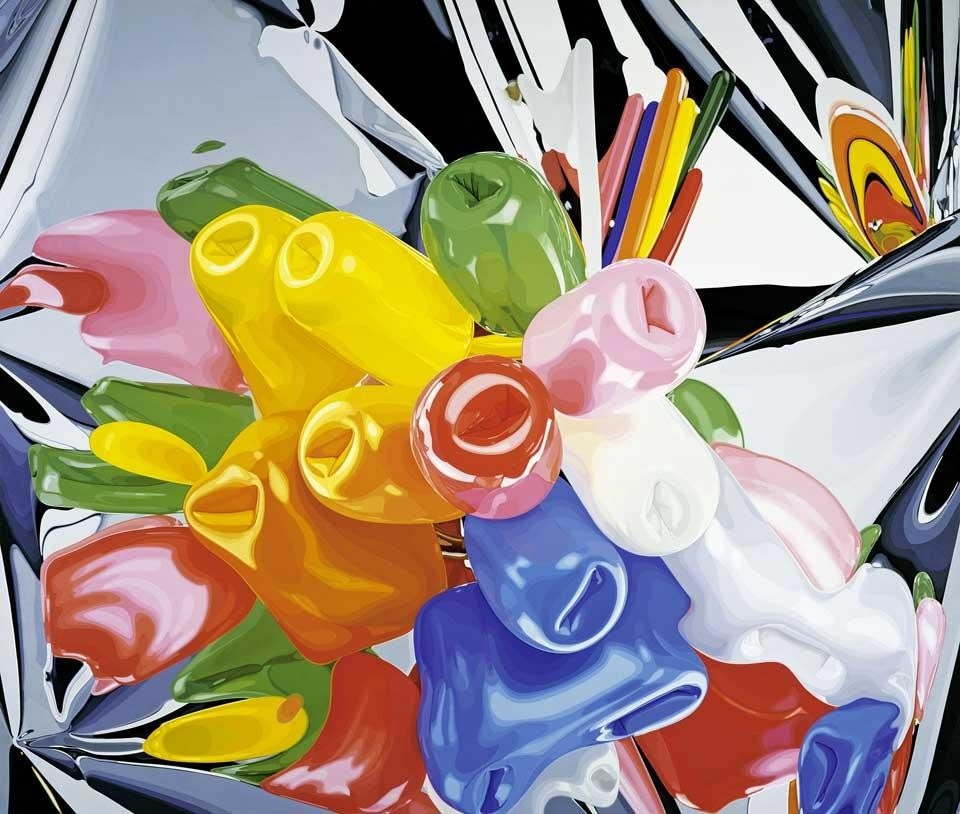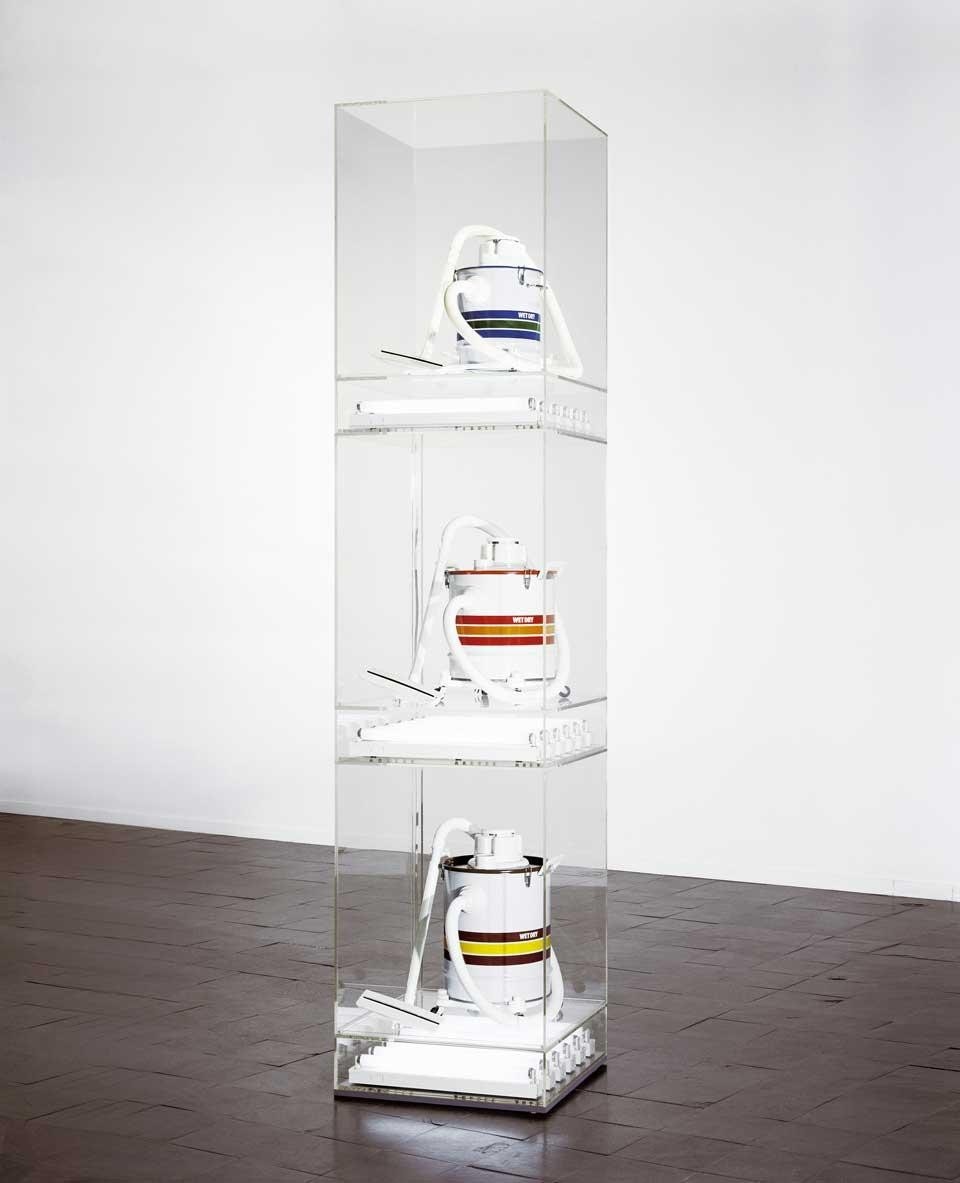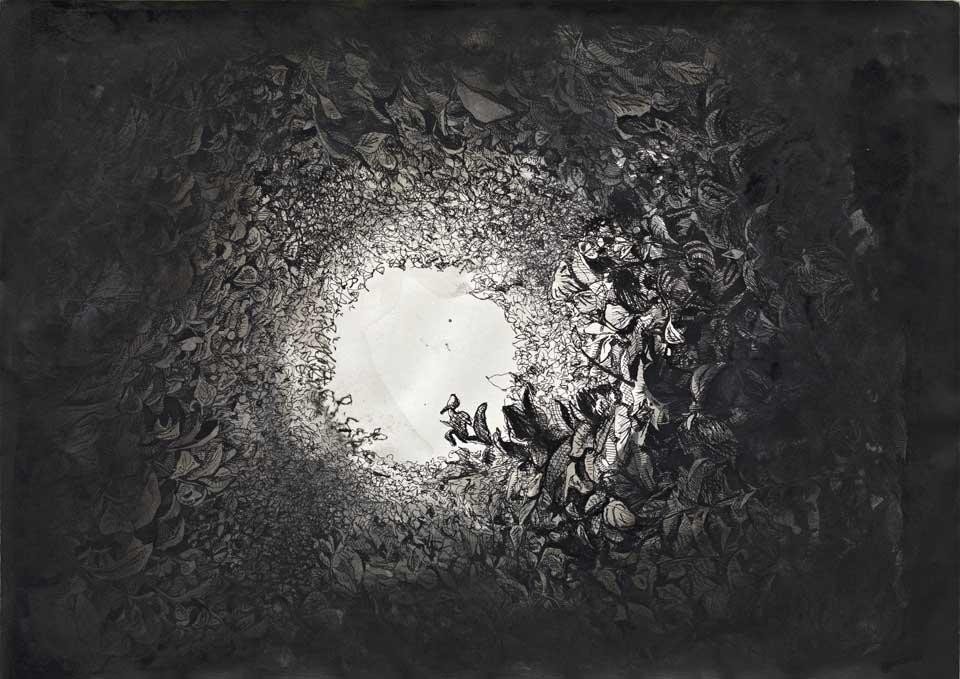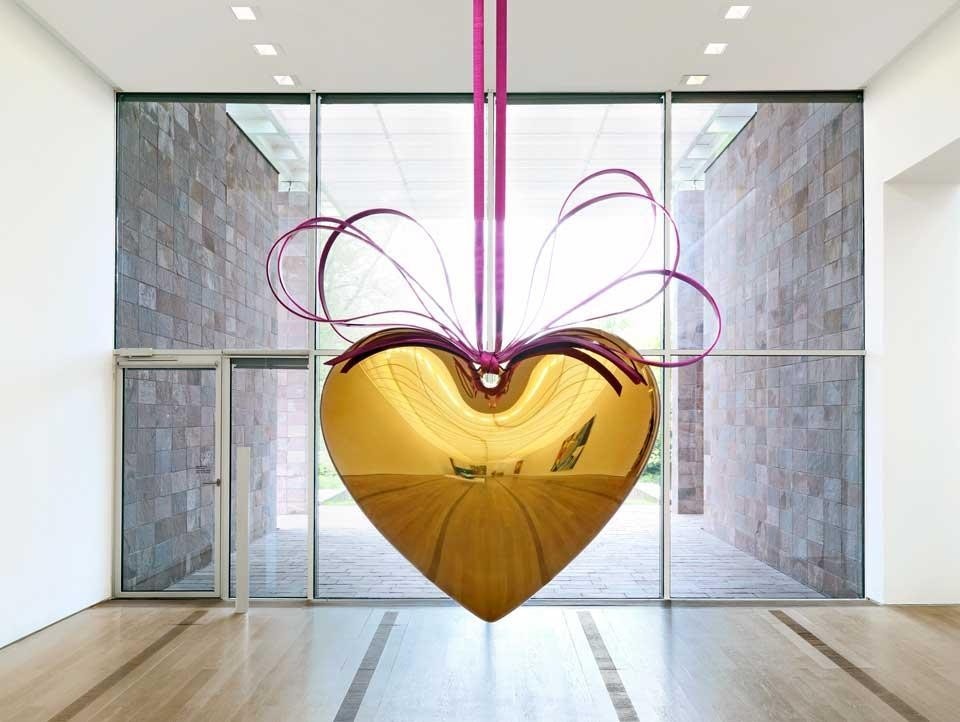The dance begins with a light box depicting the young Jeff with a box of wax crayons. For anyone familiar with him today, it is not difficult to see how his expression has remained unchanged and that his face is one of an eternal child. The exhibition's baroque presentation continues around the galleries with the series The New (from 1980 to 1987), Banality (1988) and Celebration (from 1994, up until works from 2012). The New is one of Koons's most famous series and one of the landmarks of contemporary art from the 1980s. Brand new Hoover vacuum cleaners — which made history in America in the 1950s and 60s — are enclosed in perspex cases lit from below: in their unusual cleanness, the Hoovers become sensual, innocent and pure and seem to represent the idea of novelty, the opening of new horizons for society. The contrast with the minimalist form of the transparent boxes heightens the sense of strangeness while raising the sculptural forms to the level of real icons of the United States of America.
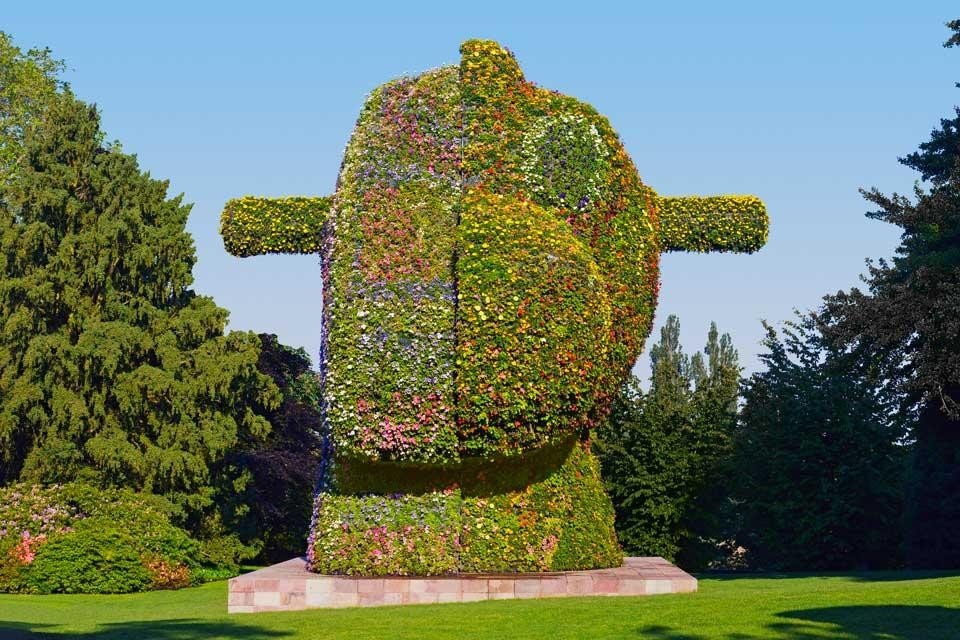

With a certain petit-bourgeois taste for niceties and delights, Koons's sculptures explore everyday religiousness and a sense of guilt
